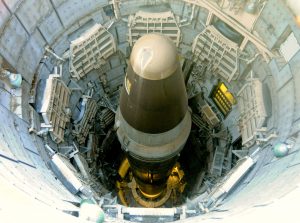The international arms control system has seen better days. Under the Trump administration, the U.S. withdrew from the Intermediate-Range Nuclear Forces Treaty, the Open Skies Treaty and the Joint Comprehensive Plan of Action (JCPOA), while leaving the last remaining U.S.-Russia nuclear arms accord, New START, dangling by a thread. Meanwhile, Trump’s sole major arms control initiative, personal negotiations with Kim Jong Un, generated no meaningful progress. The incoming Biden administration has signaled that it intends to reverse many of Trump’s withdrawals, but at least some of them are functionally irreversible.
Beyond the immediate churn, the problem is that the U.S. has become much more resistant to such negotiations. New START, ratified in 2010, was the last major arms control agreement that cleared the bar, and an increasingly partisan Senate (2/3 of which is required for ratification) seems less and less willing to acquiesce to new ones. That puts international agreements solely into the purview of the presidency, which cannot guarantee them beyond its term in office.
That is not to say that arms control is wholly dead. The last decade has seen some new international implements enter into force, notably the Arms Trade Treaty (ATT) and the Treaty on the Prohibition of Nuclear Weapons (TPNW). But those implements are better as mechanisms to set long-term norms than to produce short-term outcomes: the ATT is broad and lacks an enforcement mechanism, and the TPNW has not been ratified by any country that either possesses or has a plausible strategic rationale for developing nuclear weapons.
Meanwhile, the world continues to arm itself. That is true of conventional armaments and — crucially — of newer and potentially transformative ones as well. For example, armed drones have gone from a curiosity to a major force in the full spectrum of armed conflict in less than two decades, but the mechanisms that might regulate their sale or use were designed long beforehand and are not fit for purpose.
Similarly, there is no formal mechanism to regulate the development of offensive cyber capabilities or restrict their use within or outside the boundaries of declared war; nor does a formal instrument exists that restricts the development or use of autonomous weapons. Certainly, both topics have been heavily studied and working groups exist under U.N. auspices and elsewhere to try to agree a framework around which regulation could be designed. But that is several crucial stages short of exercising meaningful control.
The question is, do new mechanisms to control novel implements and tactics of war stand a chance in an environment where existing ones are losing traction? Or put another way: Can arms control mechanisms bind the fractures in the international system, or are they only possible when the system is basically working?
The 1960s — a decade which saw nearly every possible combination of intra- and inter-state war and the human race’s closest brush with nuclear annihilation for good measure — also gave us the Nuclear Nonproliferation Treaty, the Outer Space Treaty, the Partial Test Ban Treaty and others. So, there is reason to think that even a sharply divided world can find ways to manage threats. But by the same token, the potential of nuclear weapons to obliterate human civilization, and the overarching political narrative of the capitalist West versus the communist East also channeled political energy into workable solutions that all parties could support. There is no such clarity today, either in terms of political alignment or the hierarchy of threats.
Notwithstanding its general hostility to multilateralism, one of the Trump administration’s salient points against the Cold War-era arms control treaties is that they were mostly bilateral agreements between the U.S. and Russia without effect on the world’s current second-largest military power, China. But China substantially lags behind both the U.S. and Russia in total and deployed warhead numbers and in delivery systems, having concluded that a few hundred warheads primarily mounted on road-mobile ICBMs are sufficient to deter nuclear attack from the United States, freeing up capital to invest in other capabilities.
A treaty like New START would only work with China if the U.S. were willing to make much more substantial cuts to its nuclear arsenal than it has ever seriously considered. That is not to say that bilateral agreements between the U.S. and Russia are pointless — far from it. In addition to reducing the low probability but astronomically high impact risk of nuclear war between the two biggest nuclear powers, such agreements also demonstrate the essential ingredients of broader de-escalatory measures: transparency, flexibility and good faith.
To say that those ingredients have recently been lacking from the U.S. approach to reducing risk is to state the obvious, even if the U.S. is far from being the only offender (or even the most egregious). But no worthwhile treaty was ever agreed between partners acting in pure good faith and a sense of shared responsibility. Instead, arms control has long served as a means by which imperfect nations agree to moderate risk in the name of mutual self-interest. Despite the low tenor of the current moment, there exists an opportunity to use that framework to manage new challenges — but it would help to start with better managing the well-known ones.

































